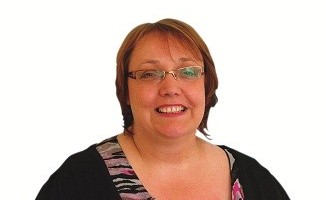We’ve all got a role to play in giving Scotland’s children the best start in life says Sally Ann Kelly, senior project manager forthe National Third Sector Getting It Right For Every Child (Girfec) Project

A local Guides group providing out-of-school opportunities, a community group organising an annual festival many families attend, and a large children’s charity delivering services on behalf of the local authority are all contributing towards the Scottish Government’s vision of making Scotland the best place to grow up.
And if things are starting to go wrong for a child any of these organisations could be the one that spots a crucial warning sign and raises a concern before things get worse.
When the report For Scotland’s Children was published in 2001 it embraced the idea of working together in an integrated way, across children’s services. That ethos has carried through into the Scottish Government’s current policy framework for children, the Getting It Right For Every Child (Girfec) approach.
However, in the 13 years since many would argue that progress towards real integration across the children’s service sector has been slow and patchy. The Scottish Government is now putting key parts of the Girfec approach onto a statutory footing through the Children and Young People Bill. This will require more services supporting children to work together and plan together, including many third sector organsiations.
The national third sector Girfec project is working over three years on an intensive basis with seven Community Planning Partnership (CPP) areas to embed the role of the third sector in implementing Girfec. In addition, there will be a number of national learning events that will allow partners from all of Scotland’s 32 CPPs to engage with the project. The project is already working in Orkney and Renfrewshire, and will be working on a phased basis in Glasgow, West Lothian, Perth and Kinross, North Ayrshire and Fife.
Many would argue that progress towards real integration across the children’s service sector has been slow and patchy
The full implementation of Girfec needs open and inviting organisations that embrace challenge and change but also offer support in constructive and meaningful ways. Entrenched ideas of organisational boundaries will have to be given up. We will all have to get better at recognising other organisations’ assets. There will need to be courageous examinations of how we properly engage children and families. Not just through limited consultations on the design of services, but through allowing families to set out the best way for our collective resources to be used.
There will be specific challenges for the third sector too. Voluntary Action Scotland are one of our partners and all of the local third sector interfaces (TSIs) are crucial to connecting the breadth of the third sector into local Girfec partnerships. But we also have to be realistic that some TSIs will need support to connect with all the organisations that have something to contribute to making Scotland a better place for our children.
Partnership must apply within the third sector as well as to the third sector. That means working together to influence planning processes, swapping skills and knowledge, and being collaborative when it comes to delivering services. One of the biggest cultural changes will have to come from the big children’s charities. Many of those organisations naturally have very good relationships with other community planning partners, and they will have to make generously sharing those connections the norm, so we can all work collaboratively for the best interests of all of Scotland’s children.
Getting it Right for Every Child, especially those adversely affected by disadvantage and inequality, provides the opportunity for great rewards, for every child. We have a challenging collective agenda. But, with the right focus and sense of purpose, it is an agenda that we can deliver.






